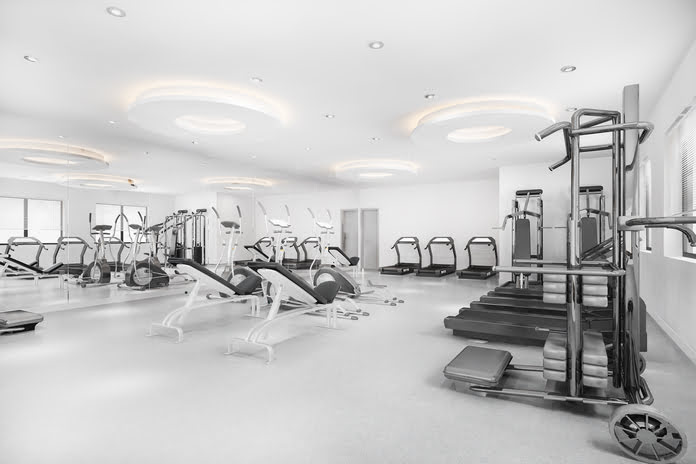Nautilus Inc. (NYSE:NLS) manufactures and markets at-home workout products such as treadmills, ellipticals, uprights, and recumbents. It is the manufacturer of the Bowflex, Modern Movement, Nautilus (defunct), Schwinn Fitness, and Universal brands of fitness equipment. Their primary sources of income are direct-to-consumer sales and retail, with around 45% direct and 55% retail. Their stock price reached a high of $30 in January 2021. Nautilus stock is currently trading at $1.3, and it is still too risky for me.
Understanding the Market: During quarantine, the company’s sales increased as many consumers sought alternatives to gyms, which Nautilus offers. Thus, net sales fell 42.9% year on year in Q4, while adjusted net sales fell 19.2% when compared to pre-pandemic 2020 levels. Overall, revenue exceeded analysts’ pessimistic projections by more than $10 million, albeit at the expense of margins.
Gross profit fell to 15.6% in Q4 from 17.5% the previous year. This is owing to the severe discounting caused by the decision to discontinue the Nautilus-branded product range. Without Nautilus-branded products, gross profit would have been 20.3%.
Because this market has a minimal recurrent client base, it is difficult for Nautilus to produce consistent revenue year after year. The market for their products might change greatly from year to year, and many “advertisements” are influenced by social trends.
Competition
Life Fitness, ABEO, SuperFlex Fitness, and Balaz are among notable competitors in the same business, all of which manufacture gym equipment. The global market for Nautilus is projected to be around $10 billion. However, a little decline is projected in the future because Nautilus saw reduced demand than before the outbreak.
According to a Next Move Strategy Consulting analysis issued in December 2022, the global market for home equipment is predicted to increase at a 2.8% CAGR until 2030. Other independent reports, on the other hand, estimate the market’s CAGR to be as high as 9.3%. According to Nautilus’ research, “decreased demand” was observed as compared to pre-pandemic levels.
Nautilus is expected to produce $270-$300 million in FY 2024, but due to severe competition in the equipment market, the company still expects a negative EBITDA.
JRNY
Nautilus’ most recent venture is the JRNY app, a subscription-based program that tracks the user’s training and makes recommendations. The app is available for free as well as on a monthly subscription basis for $20. JRNY’s user base grew dramatically last year.
JRNY®, the Company’s personalized linked fitness platform, had 508,000 members as of March 31, 2023, indicating a 56% increase over the same quarter last year. 156,000 of these Members were Subscribers, marking a 41% increase over the same period last year.
While member growth is encouraging, it is disappointing that subscriber numbers did not improve at all compared to the last report, which ended on December 31. Furthermore, the advice only indicated a 25% growth to 625,000 members for next year. JRNY is slowing down year on year.
If JRNY becomes a success, it means the company has discovered a way to create consistent revenue while maintaining high-profit margins. However, considering the performance of the previous quarter, it appears unlikely that JRNY will be able to reach a large consumer base.
The Bulls Scenario
The company’s obvious short-term bull case is that demand returns to COVID levels. However, such an event appears unlikely given that consumer spending is forecast to fall in the second and third quarters. In fact, I expect the retail sector to continue declining as retailers alter their inventories.
A more likely scenario is that Nautilus begins to sell some of its brands. The sale of the Nautilus brand is estimated to generate $1.8 million in royalties for Nautilus this year.
Finally, the Company anticipates royalty revenue of $1.8 million as a result of the sale of the Nautilus Brand.
This is a plus in my opinion because it equals clean earnings. As previously said, Nautilus has several children’s brands, thus increased passive earnings will lower operational costs and lessen hazards.
The sharp reduction in revenues in 2019 may have foreshadowed the demise of Nautilus, which was only saved momentarily by the quarantine. The truth is that Nautilus’ product characteristics are fine, merely ordinary, with a few niches. Private workout equipment does not appear to be necessary in an environment where gym culture is becoming the norm, and demand is declining.
Scenario of Bears
The board said in September that it was looking into “strategic alternatives,” including the sale of the entire company. This is a wholly speculative estimation as to how much such a sale would cost, or, if all else fails, the company’s liquidation worth. In this scenario, the company does not appear to be too awful.
Nautilus has around $18 million in cash and a market capitalization of $39 million. In addition, the corporation has $54 million in current debt and more in leases. For the purpose of simplicity, I’ll assume that all of the properties are used as liens in the event of liquidation.
The company has $21.5 million in trade receivables and $29.3 million in trade payables, for a net liability of $7.8 million. In my case, accrued liabilities of $15.5 million will be offset by operational lease right-of-use assets of $19 million.
This leaves $46.5 million in inventories, which I’m assuming can be auctioned off at 40% of their original worth. I found liquidation auctions for various fitness products as well as liquidators offering liquidated fitness equipment to obtain a better idea of how much this equipment would sell for. Items sold at auction often sell for 25-40% of the MSRP if they do not contain a quality check and 50% if they do. Equipment is typically sold at 50-70% of its MSRP by liquidators. As a result, I underestimated the importance of such a massive occurrence and averaged 40% for all objects, assuming they were discovered in excellent condition. Overall, my oversimplified model has a $30 million liquidation value ($0.85 per share), which is only a 25% decrease from the present $40 million market cap.
Risks
My main concern regarding the company is a lack of demand for home exercise equipment. I appreciated the board’s determination to aggressively get rid of inventory, cutting it in half compared to a year earlier. However, selling at a loss may harm its already-thin profitability and balance sheet. On the bright side, the company is expected to surpass consensus predictions, as it forecasts $270-300 million for fiscal year 2024, while estimates range from $244-285 million. Investors should pay particular attention to how the company handles declining demand, and establishing positive cash flow will be critical for a higher valuation. In the short run, I don’t see what Nautilus can do to boost demand. This year, they are likely to report negative earnings, and there is little sign of a recovery.
Conclusion
Even though Nautilus stock is trading at a discount to its highs, I believe the company is unlikely to undergo a comeback. However, the company is already fairly inexpensive, so I wouldn’t call it a buy. I’d even consider buying if the price fell below $0.85, which I believe is close to liquidation value.
Featured Image: Freepik @ dit26978









